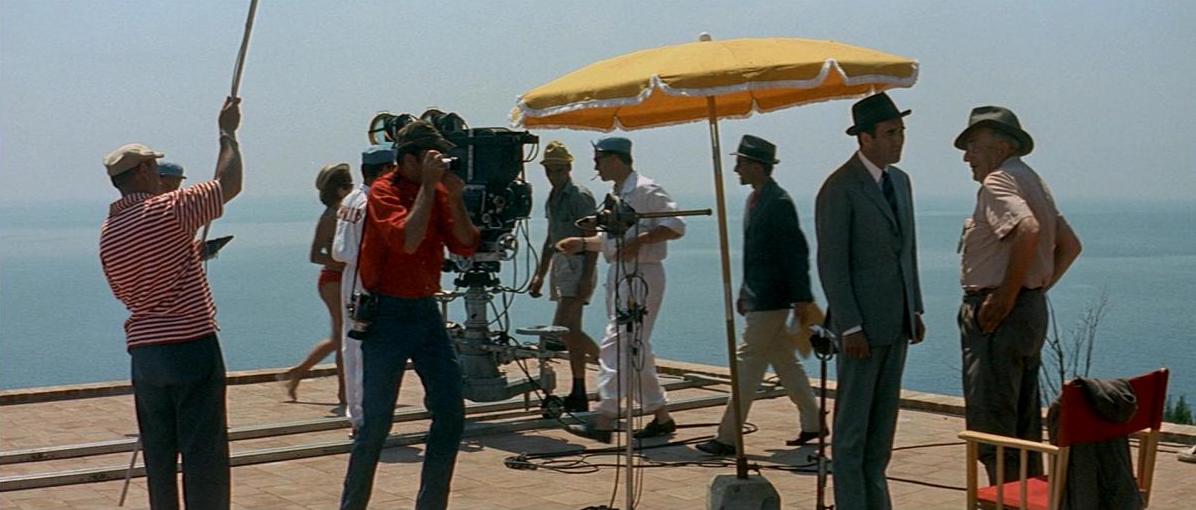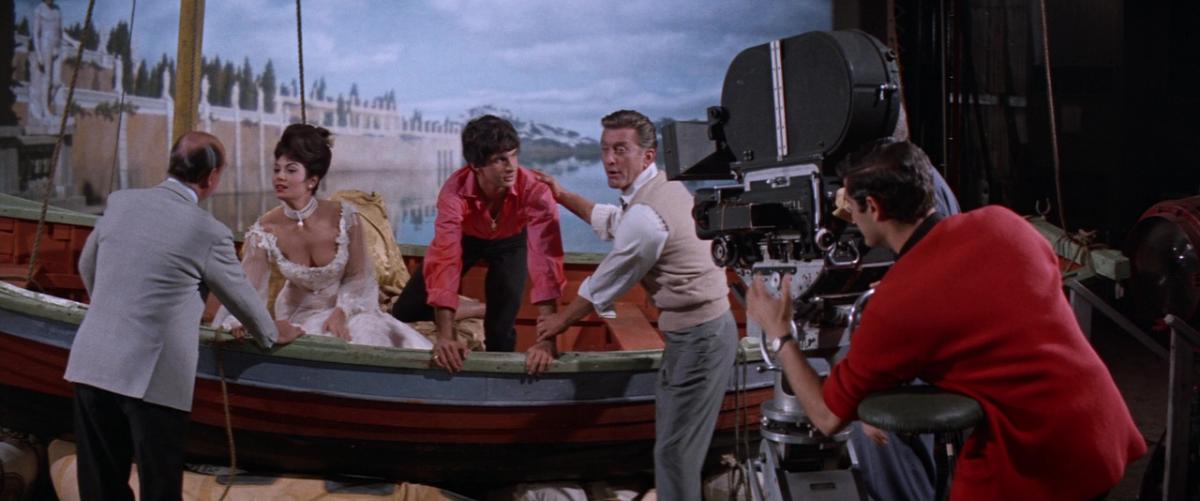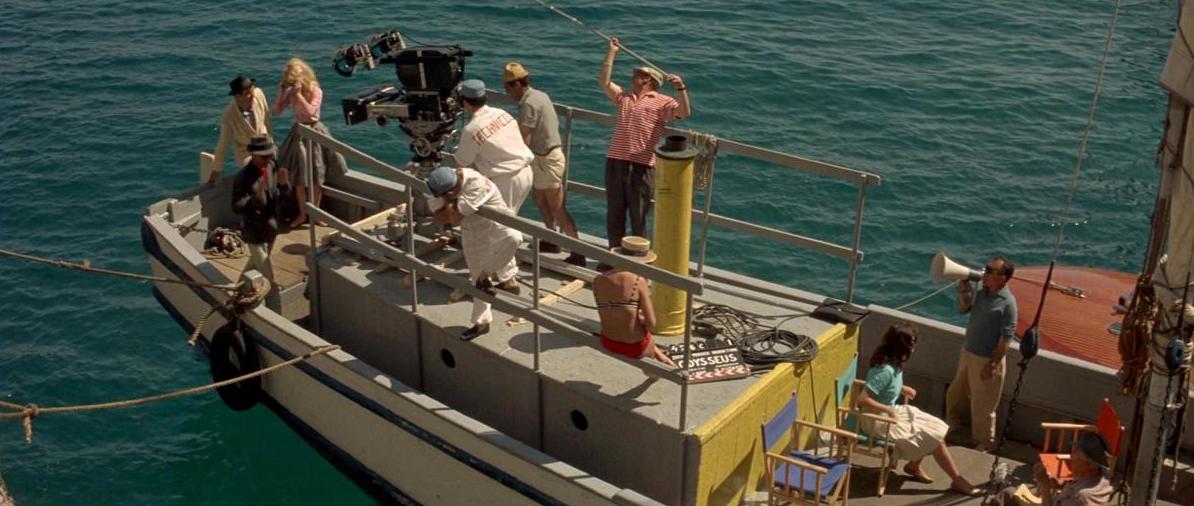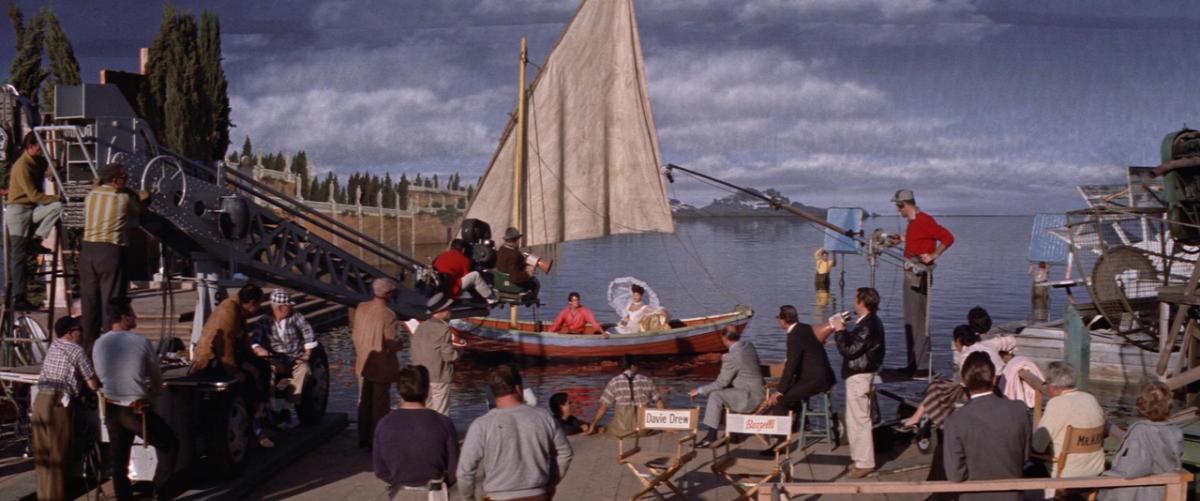Mise-en-Scène: The Most Beautiful Word about Film

But alas, it is no longer used. People obviously still know the technical function of directing. But the aesthetic quality it once denoted? No. It is as if it has been cut out of film culture. No film critique that still uses the word, no audience that enjoys it, and hardly any films in which it can be seen.
For me, however, it remains the most beautiful word about film. It introduced me to true intimacy with films. It was the watchword of cinephilia. Observing the mise-en-scène gave all the other elements of a film their own vibrato. It is the source of an enthusiasm (“critical enthusiasm”)1 that led not to an interpretative delirium (“what is meant”) but to an affective delirium (“what is there to empathise with”).
Mise-en-scène is a particular form of directing. It was observed, made autonomous and commented on by post-war French film criticism. André Bazin used it in the Revue du Cinema and later, in the Cahiers du Cinéma, it belonged to the standard film-critical vocabulary.
To speak of mise-en-scène is thus to speak of a historical phenomenon: as a term from the history of film criticism, as a way of making films (mostly in the 1940s and 1950s).
The history of post-war film criticism has yet to be written. Any reading of texts by Bazin and the Cahiers editors reminds the reader of the obvious fact that one cannot brand this tradition as “realism” and “auteur theory”, as people have been doing for quite a while now. These are two far from uninteresting, yet highly speculative notions which the French tradition of film criticism has been handling very imaginatively but never dogmatically. Besides, the mise-en-scène touched on so many more facets of film than would be apparent from these two notions. Hence my suggestion that the term “mise-en-scène” could shed a fascinating new light on a part of film culture that has been handled rather crudely.
In what follows, I would like to suggest some themes I am reminded of by the expression “mise-en-scène”. A sketch of a pattern book, ideas about a word.

Labour
Simply put, mise-en-scène is the entire work performed on a film set: working with the set design, with props, with actors, with lighting, with sound, with the camera. Mise-en-scène is what one sees in Godard’s Contempt, in Minnelli’s Two Weeks in Another Town.
Mise-en-scène is a labour process. On set, an intricate and subtle linkage of things, people and machines is established. The artisanal and the technological, the rigorously technical and the much more obscure creative working procedures are laboriously fitted together. There is a heterogeneity of labour cultures: the set craftsman, the creative concentration of the actor, the precise technology of the film equipment. They are labour cultures without a common language, brought together by the directing.
Mise-en-scène is a production process. The intricate linkage of the labour process must result in a unique, one-off product, namely that one specific film shot. Immediately afterwards, everything is taken down and reconstructed into a different linkage.
Mise-en-scène as an aesthetic category has to do with the awareness of this unique character of each film shot. Mise-en-scène is the negation of film production as serial production. It is the emphasis on a permanent state of inspired bricolage. Every film shoot is a triumph over its improbability. “Mise-en-scène is putting something together, which can be said to be well or badly put together.”2
Metteur-en-scène
Watching and appreciating a film starting from its mise-en-scène is like adding a fourth dimension to plot and characters. Behind the characters their maker appears, behind the plot the process of the mise-en-scène appears.
This addition pulls the film open. A gap emerges, a margin. It has become a point of doctrine to interpret that opening as a distancing, as dissociation, alienation, objectification, criticism. These are the form-stylistic and later the content-ideological ways in which people have sought to interpret the mise-en-scène. Already the Cahiers critics themselves said that the Hollywood material is trivial and that style there is a superior treatment or a coded critique of it.
This seems to me to be a modernist appropriation of the mise-en-scène. It fits too well into a conception of art plagued by permanent self-interrogation, into a so-called critical approach to the culture industry.
Reading some of the key texts on mise-en scène,3 one notices that in those texts it creates no distance whatsoever, serves no self-protective reflex. On the contrary, the mise-en-scène functions as exaltation. It deepens, intensifies, radicalises. It is the ultimate sign of a deep solidarity with the material. Mise-en-scène is not the place of doubt, but of rapture.
There is a second facet to this distorted, detached interpretation of mise-en-scène, namely that it would be a way of emphasising the shooting situation. Mise-en-scène as visible, emphasised labour. In this, one misses the essential manoeuvres of the mise-en-scène. For the mise-en-scène may well make the shooting situation autonomous, but it is also a (visible!) step back. Against the standard decoupage, the metteur-en-scène sets a certain contemplativeness. His presence manifests itself through emphatic restraint (which of course is not the removal of manipulation and labour, but a different form of it). One sees the metteur-en-scène as a figure stretched between two extremes: enthusiasm and restraint, solidarity and distance. The entire mise-en-scène as an aesthetic issue rests on the paradoxical combination of passive and active, absence and intervention, doing and letting it happen. The mise-en-scène does not serve a clear, identifiable, demonstrable meaning – it does not clarify, does not critique. If anything, it distrusts meaning, tries to outwit it.

Physical
In film, everything that cannot be shown is abstract: motives, points of view, psychology, connections and explanations; in short, a considerable part of the machinery of the well-told story. Mise-en-scène is opposed to everything that is abstract, giving the concrete a more intense form of presence.
Everything in film has a double form of that presence (each with its own “weight”): the presence of being in the image and that of being narratively motivated. In the mise-en-scène, the presence in the image prevails; it distrusts any presence motivated by story or decoupage.
This does not mean that the story is disdained. It is merely told and used differently by the mise-en-scène. The strict narrative logic is carefully bypassed, very gently put into perspective. It is suggested that it could be not the purpose, but merely an alibi. And the distinct emotions of each scene are pushed to the fore. The mise-en-scène emphasises the states, the modes of being, the qualities of the situation (which are abstractions too, but of a different nature from the narrative ones). Narrative elements are starting places, not for a sequence, but for a brutal explosion of emotions, or an irresistible blossoming of them. Mise-en-scène treats story elements pretty much as opera does with its arias: there is a story, but on top of that there are drawn-out and spun-out expressions of the emotions of that situation.
Mise-en-scène is very often very baroque, expressionistic, hysterical even. It is certainly no coincidence that the Cahiers thematised it during the 1950s. This baroque film decade brought the mise-en-scène to fruition as a trope.
This form was erroneously given a realistic meaning. The asceticism with regard to the narrative, combined with gluttony with regard to the visible, resulted in a very affected parti-pris. I cannot help but feel that the mise-en-scène functions as a dandyish reflex. Facing the banally visible not with the weapons of meaning but with those of style is rather like the cross-grained ambition of dandies. For them, too, meaning (content) is tasteless and vulgar as a defence against reality. For them, too, only one thing matters: the allure with which one touches the concrete.
Mise-en-scène is touching, where feeling is limited to showing and showing already has the insistence of feeling. And here I should quote Astruc: “What is seen is less important, not than how it is seen, but than a certain way of needing to see and show.”4

The visual
The stakes of the mise-en-scène are badly understood if one presents it as a visual style, as plastic forms on the screen, as something pictorial. It is not an art of the beautiful but of the intelligent image (“The idea of a thing never ceases to run underneath that thing without the need to abandon it”).5
The mise-en-scène and the “politique des auteurs” [auteur theory] are badly understood if one remains blind to the enormous significance of the nineteenth-century romantic with its double-entry bookkeeping of coolly registering, in which both myth and pathos seem to find their place.
Mise-en-scène is a blessed moment in film history that realises endless play, a never-stabilising balancing act between opposing demands and options. No wonder that, in the tradition of film criticism, they did not hesitate to place the mise-en-scène at the level of spirituality. Not spirituality as a realm of meaning, but as the essence of a will, an obsession and an intellect. Here, all meaning is fuel for a style: how one places oneself and the level at which one does so.
- 1Serge Daney, “le délire critique” in Cahiers du Cinéma 337 (June 1982), 84.
- 2“Mettre en scène, c’est machiner, et d’une machination on dira qu’elle est bien ou mal montée.” Jean-Luc Godard, “Montage mon Beau Souci“, in J.-L. Godard par J.-L. Godard (Paris: 1978), 55.
- 3Alexandre Astruc, “Qu’est ce que la mise en scène?”, in Cahiers du Cinéma 100 (October 1959); François Weyergans, “Qu’est-ce que le cinéma?”, in Cahiers du Cinéma 120 (June 1961); André Bazin, “Comment peut-on être Hitchcocko-Hawksien?”, in Cahiers du Cinéma 44 (February 1955).
- 4“Ce qui est vu importe moins, non pas que la façon de voir, mais qu’une certaine façon d’avoir besoin de voir et de montrer.” Astruc, op. cit., 16.
- 5“L’idee d'une chose ne cesse de courir sous cette chose, sans qu’il soit nécessaire de renoncer à celle-ci” Weyergans, op. cit., 46.
For over half a century, Belgian critic Dirk Lauwaert (1944-2013) published essays on film for magazines including Film & Televisie, Kunst & Cultuur, Versus, Andere Sinema and De Witte Raaf. In addition, Lauwaert wrote about fashion, photography, the city and visual art. For Lauwaert, such criticism was never a purely professional affair; it was, first and foremost, a way of documenting how a film or a piece of art personally impacted him as an amateur. Lauwaert’s film criticism is not, as yet, internationally recognised. To provide a first corrective to this, Sabzian will be publishing a series of English translations of Lauwaert’s most notable writings on film, in collaboration with LUCA School of Arts. This will provide our international audience with an occasion to become acquainted with his work and its singular writings. Lauwaert was an author for whom “watching film and loving film [was] a way to be with the world”. Remaining suspicious of “the power over the concrete, which is indispensable for life,” Lauwaert was someone for whom the act of watching films made up his “whole life.” In this sense, film for Lauwaert turned into the experience of that “essential, sublime distance.” A more extensive English introduction to Lauwaert can be found here.
This article was originally published as ‘Mise-en-scène: het mooiste woord over film‘ in Versus, nr. 4, 1983.
Image (1) and (3) from Le mépris (Jean-Luc Godard, 1963)
Image (2) and (4) from Two Weeks in Another Town (Vincente Minnelli, 1962)
This translation was published by courtesy of Reinhilde Weyns and Bart Meuleman.
With the support of LUCA School of Arts, LUCA.breakoutproject.

